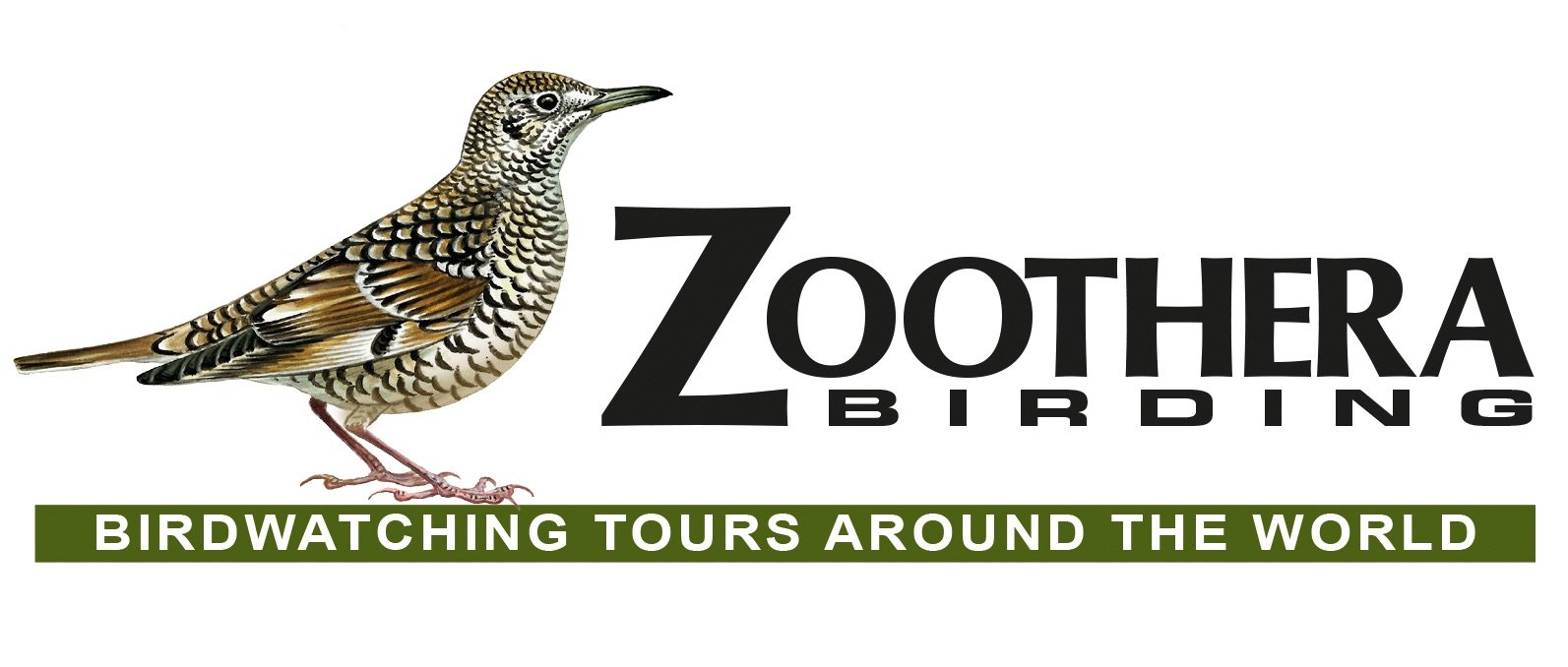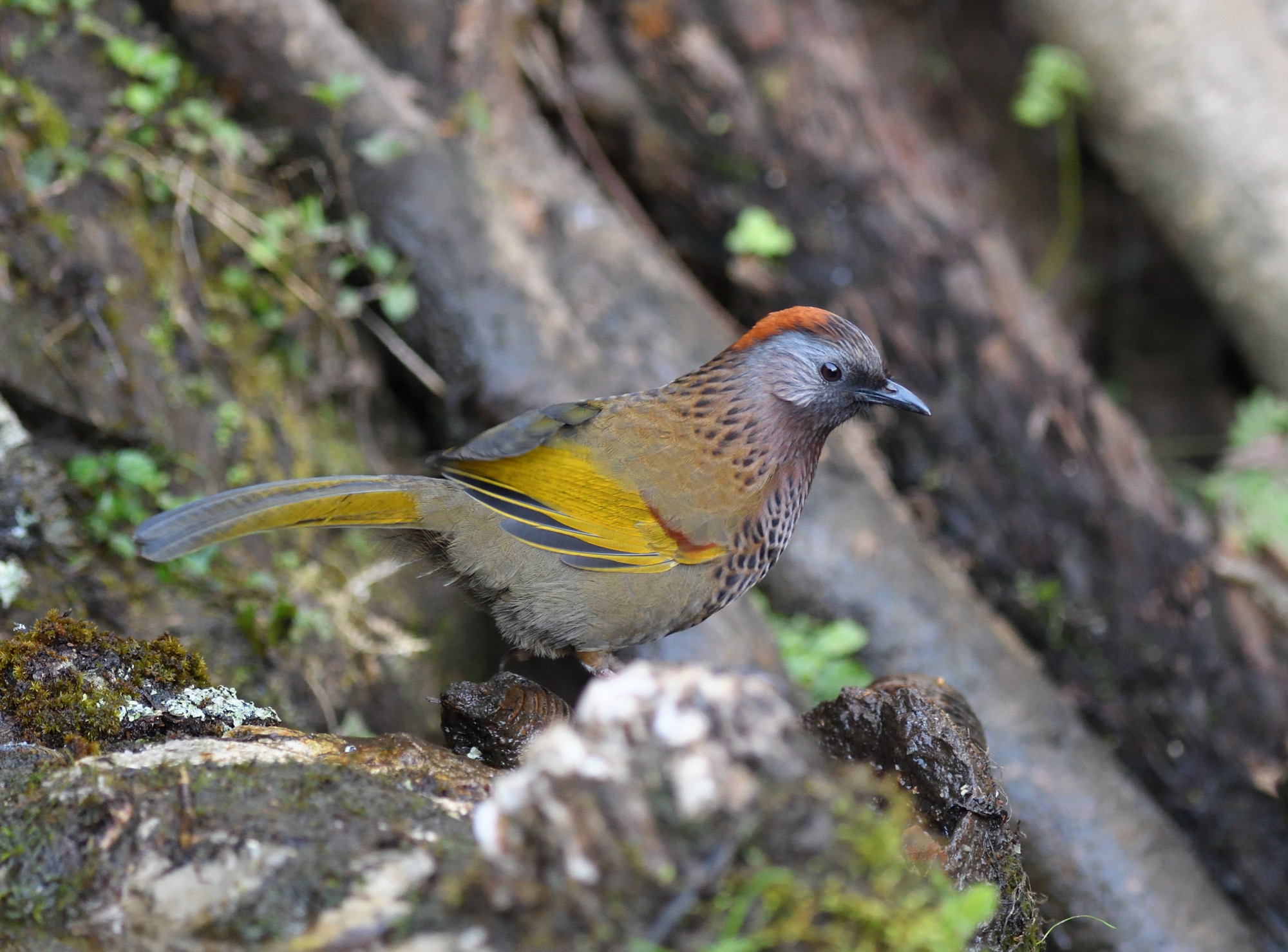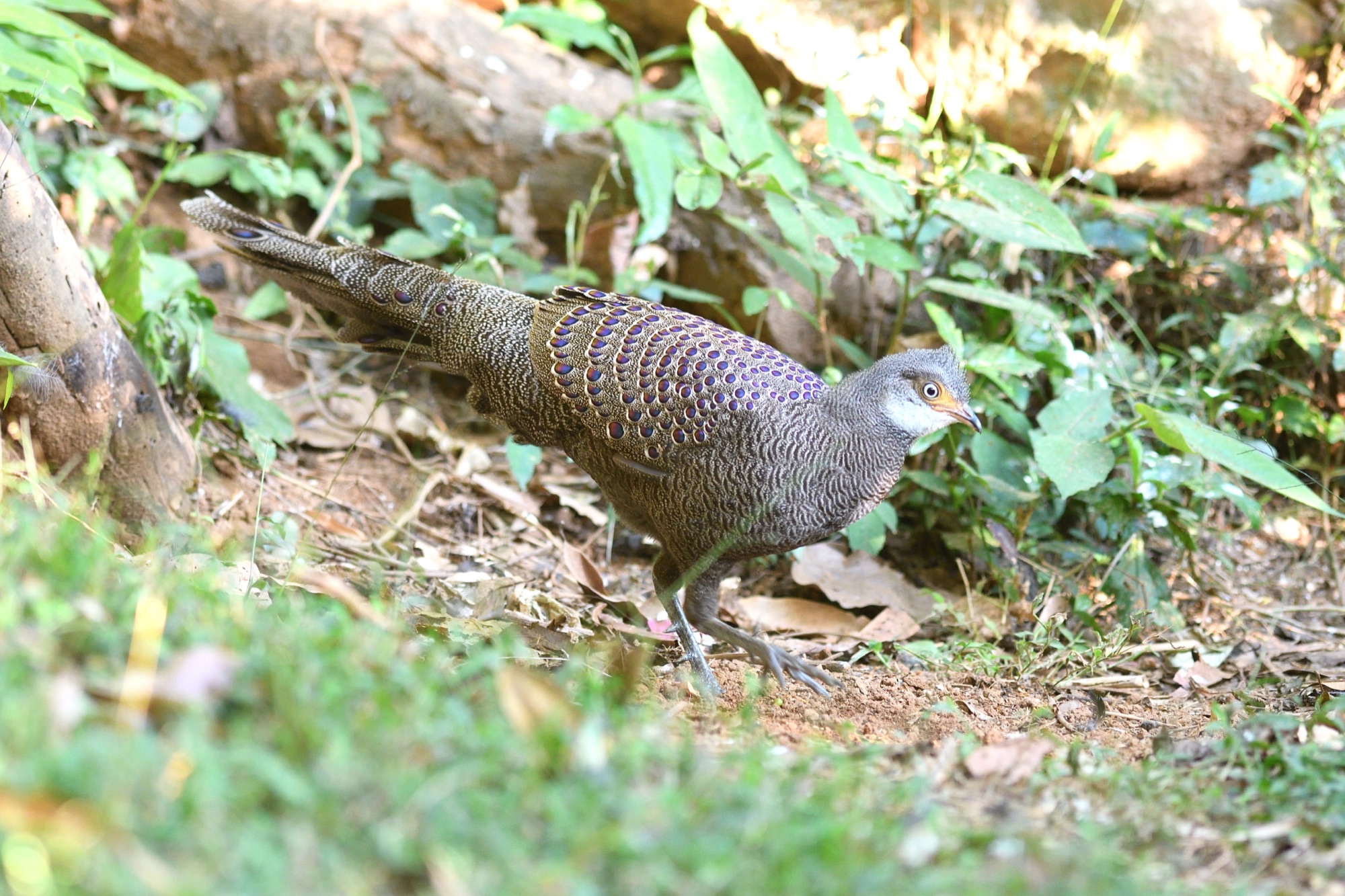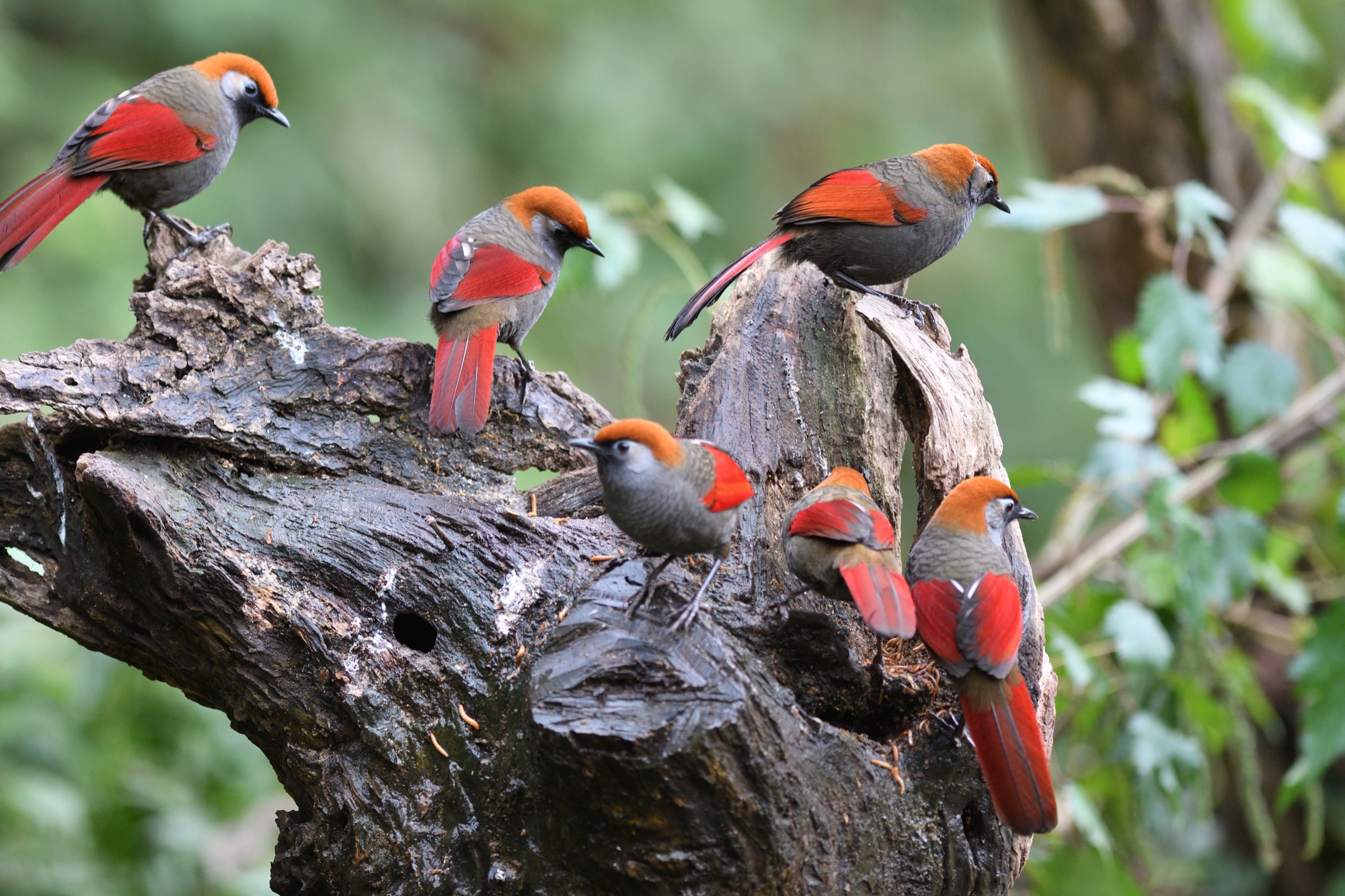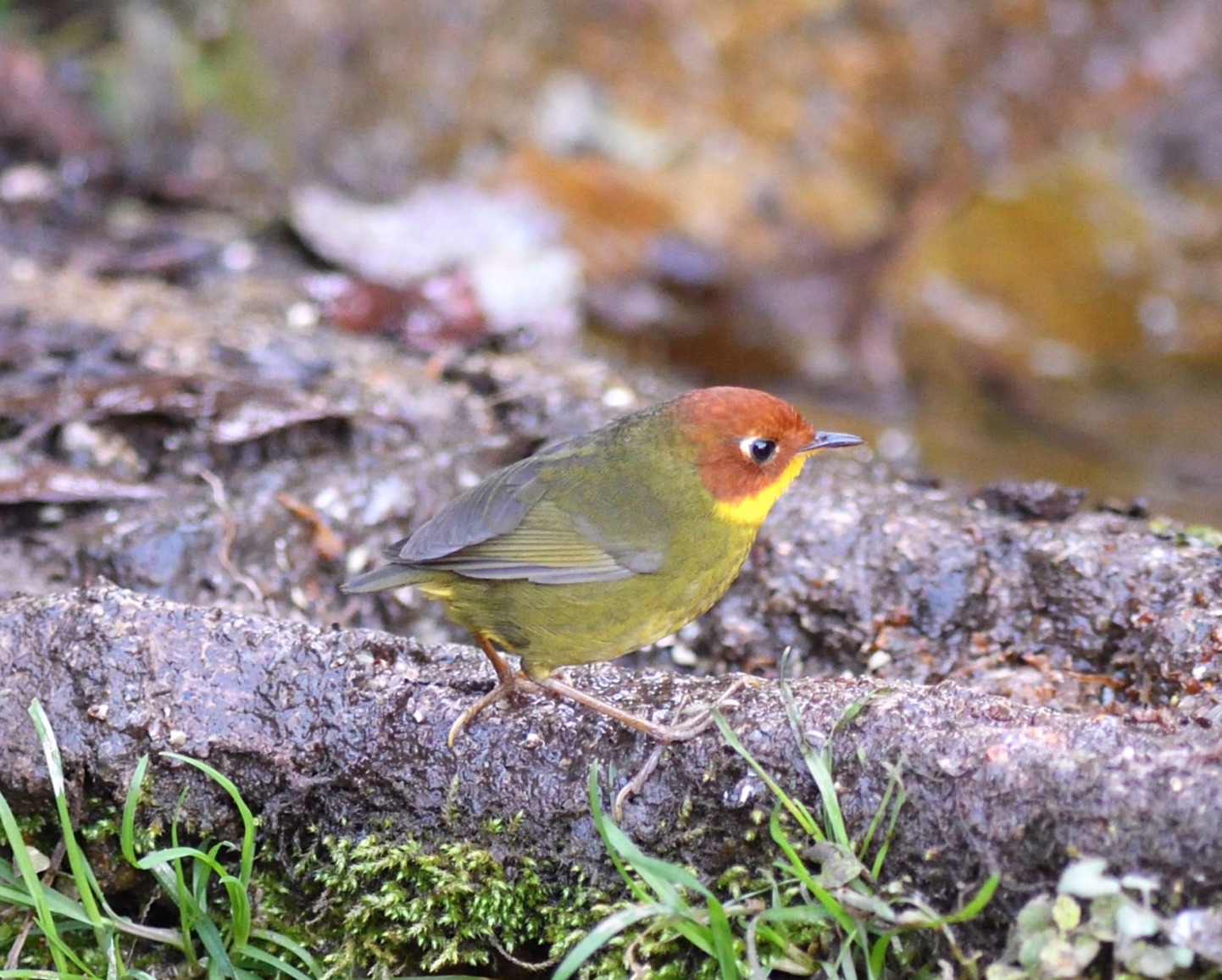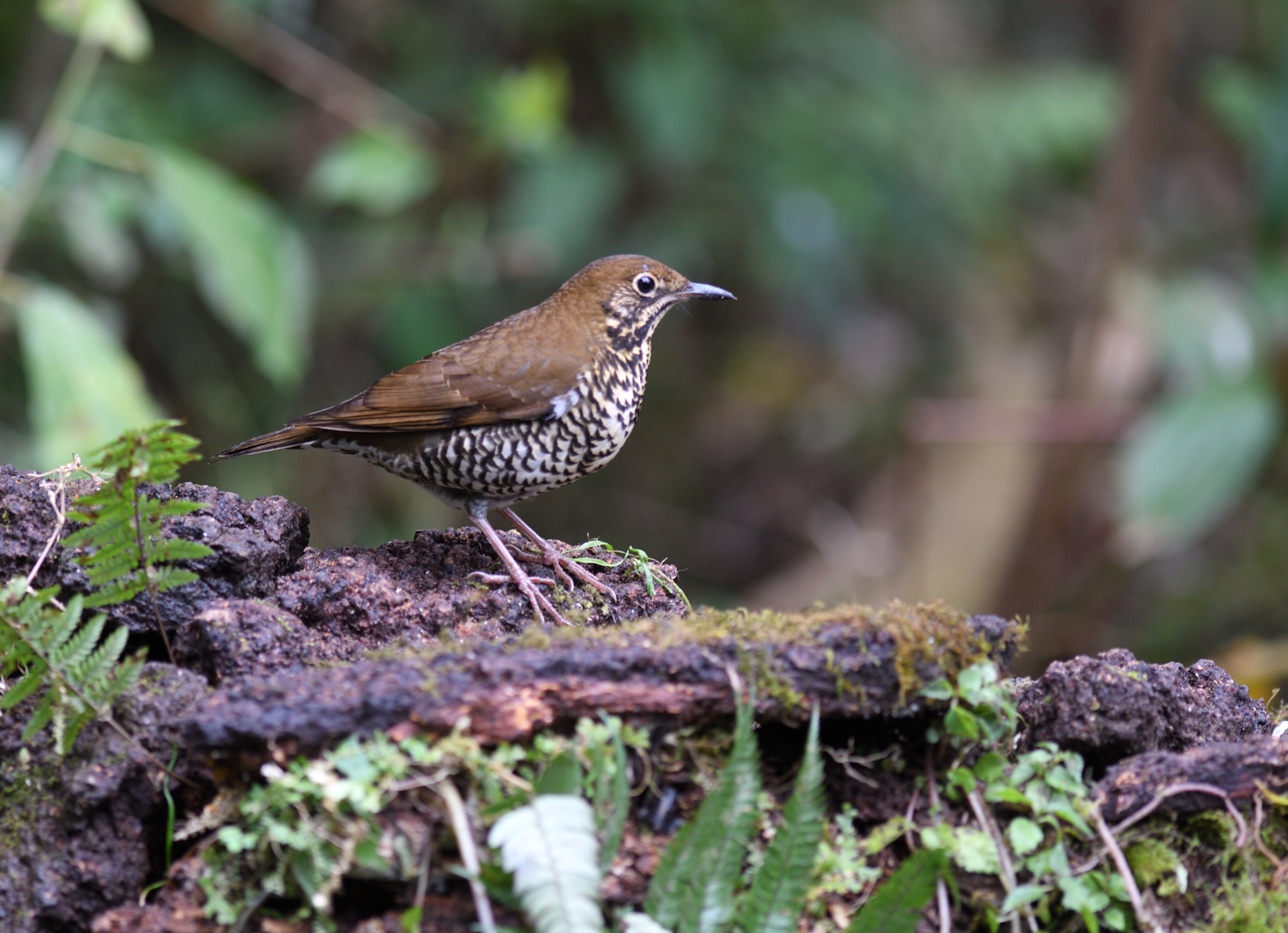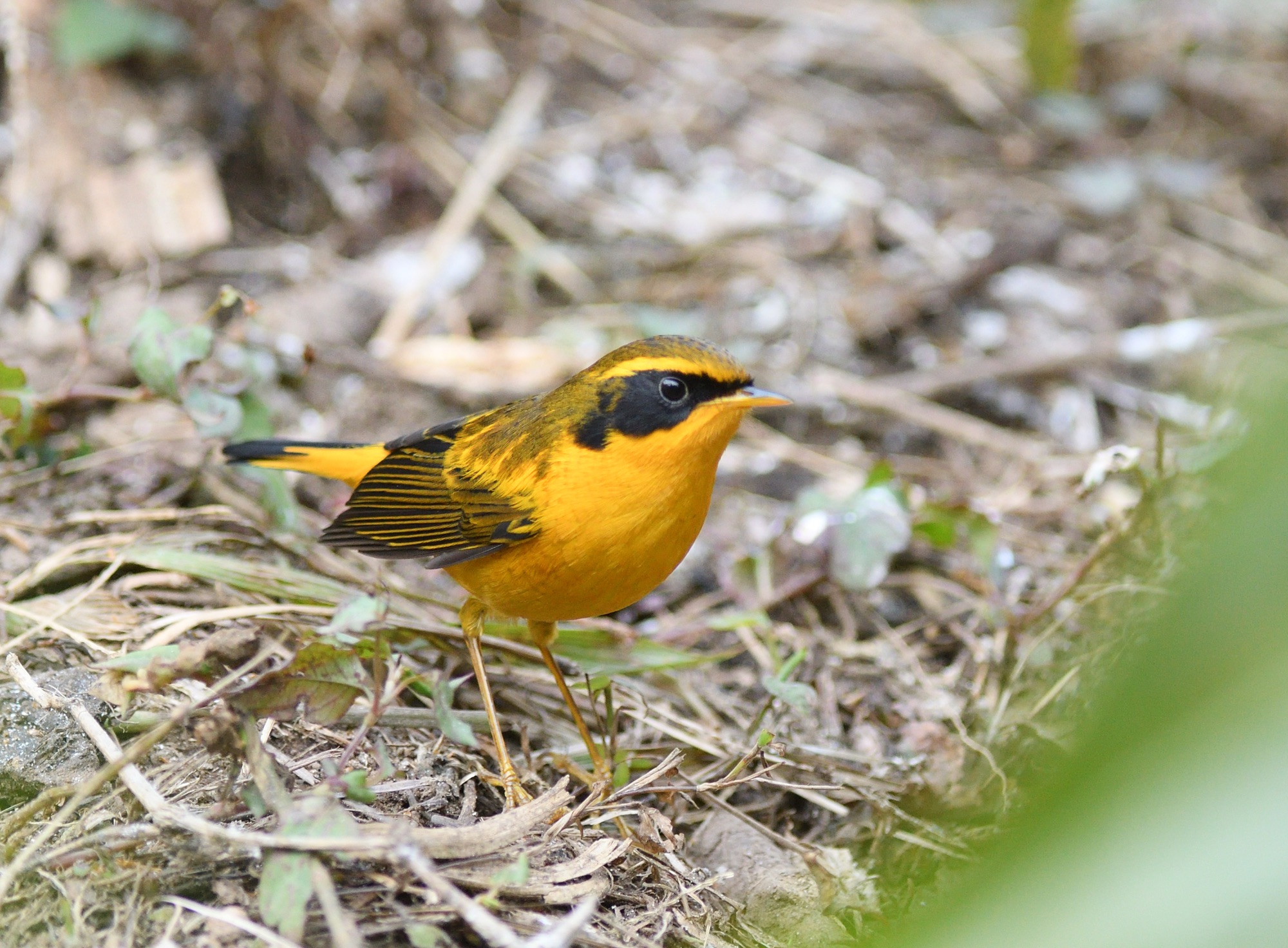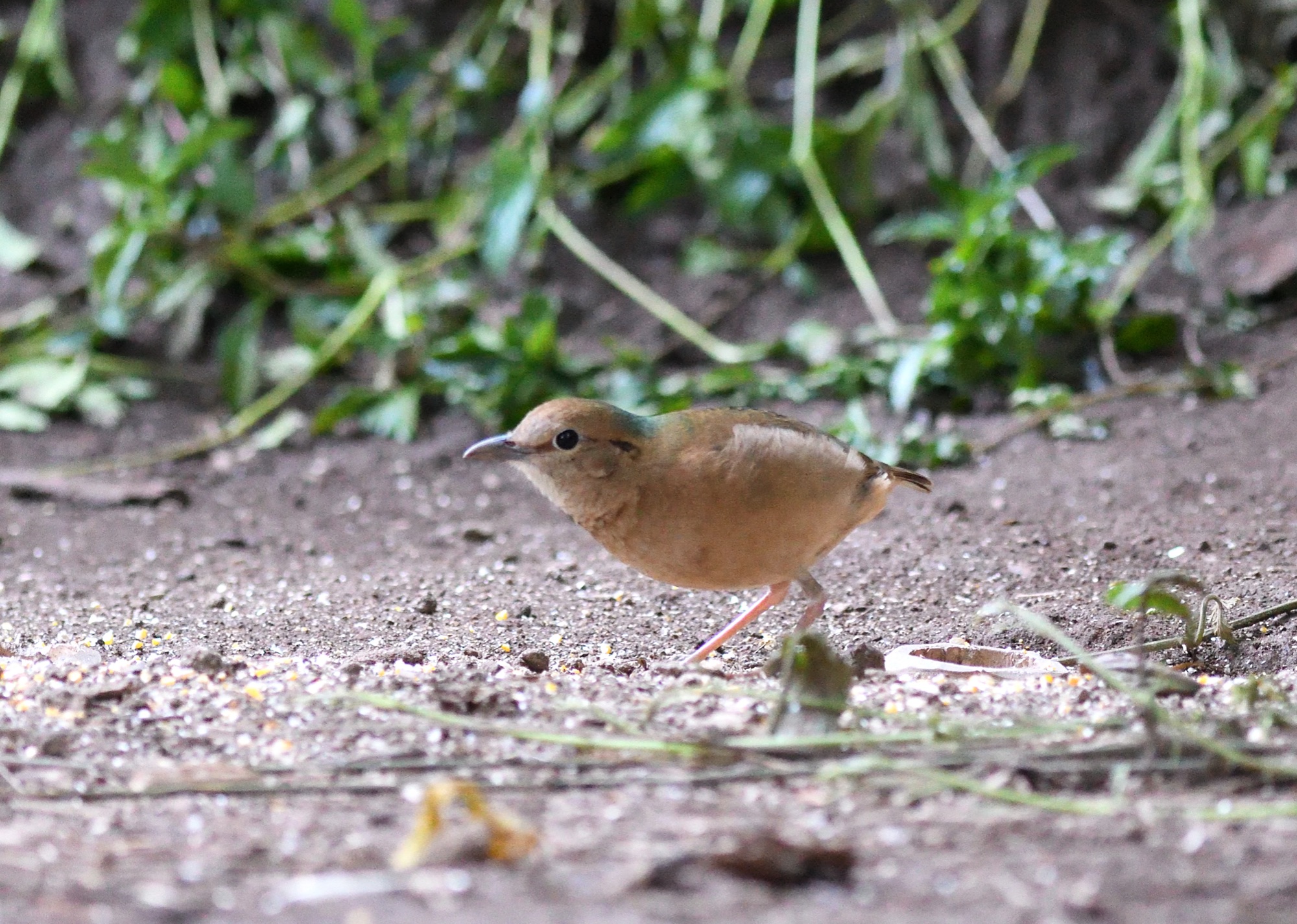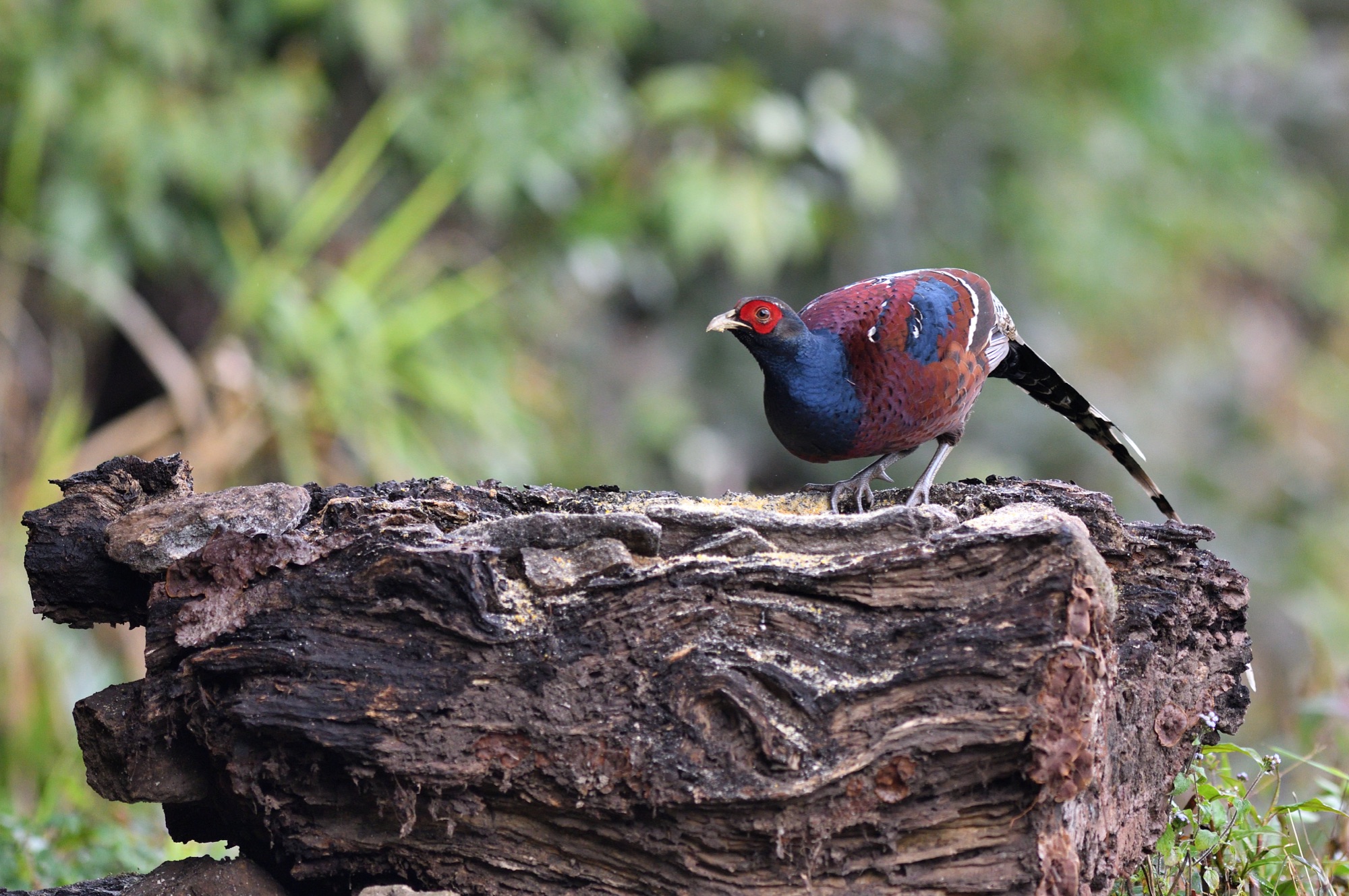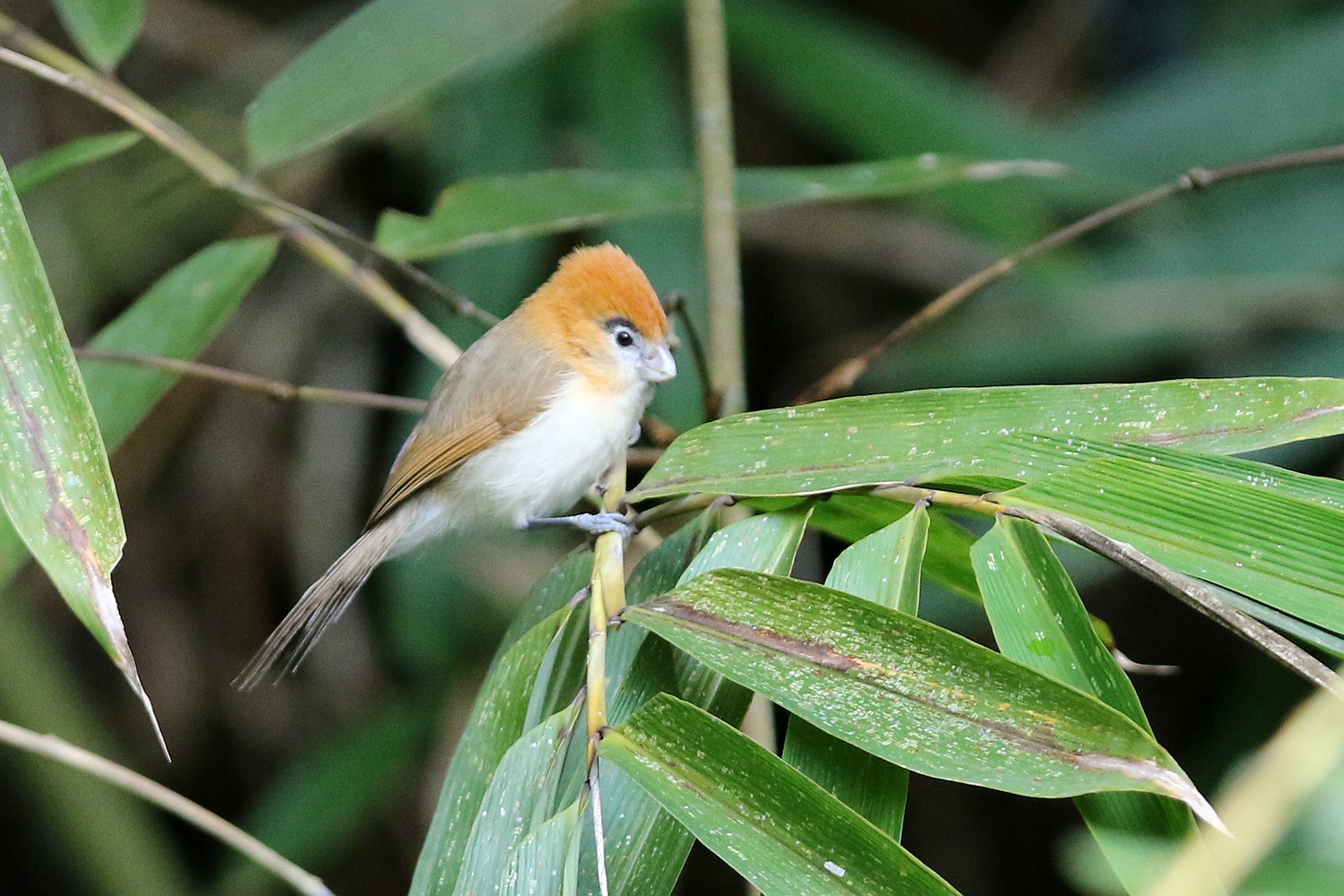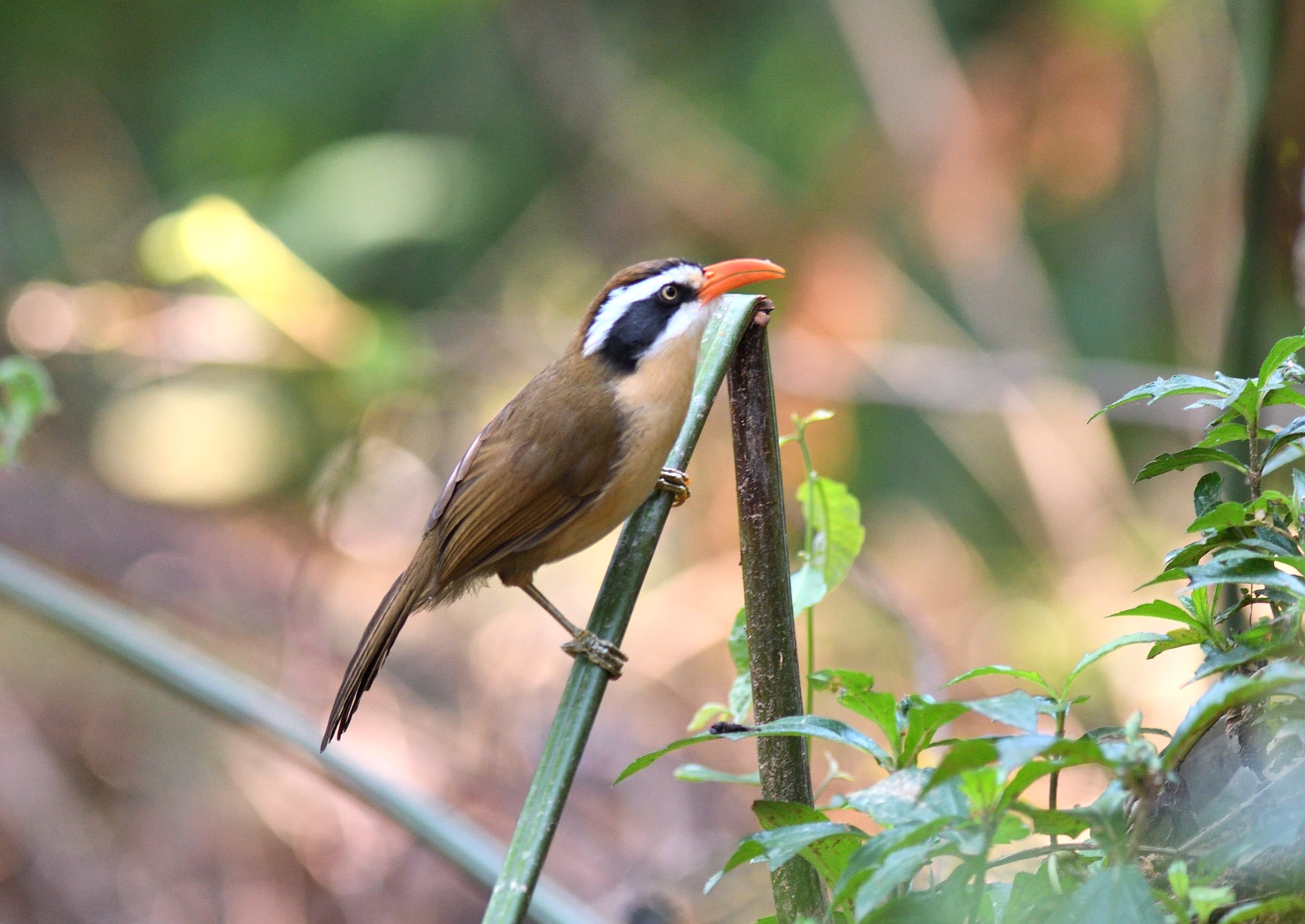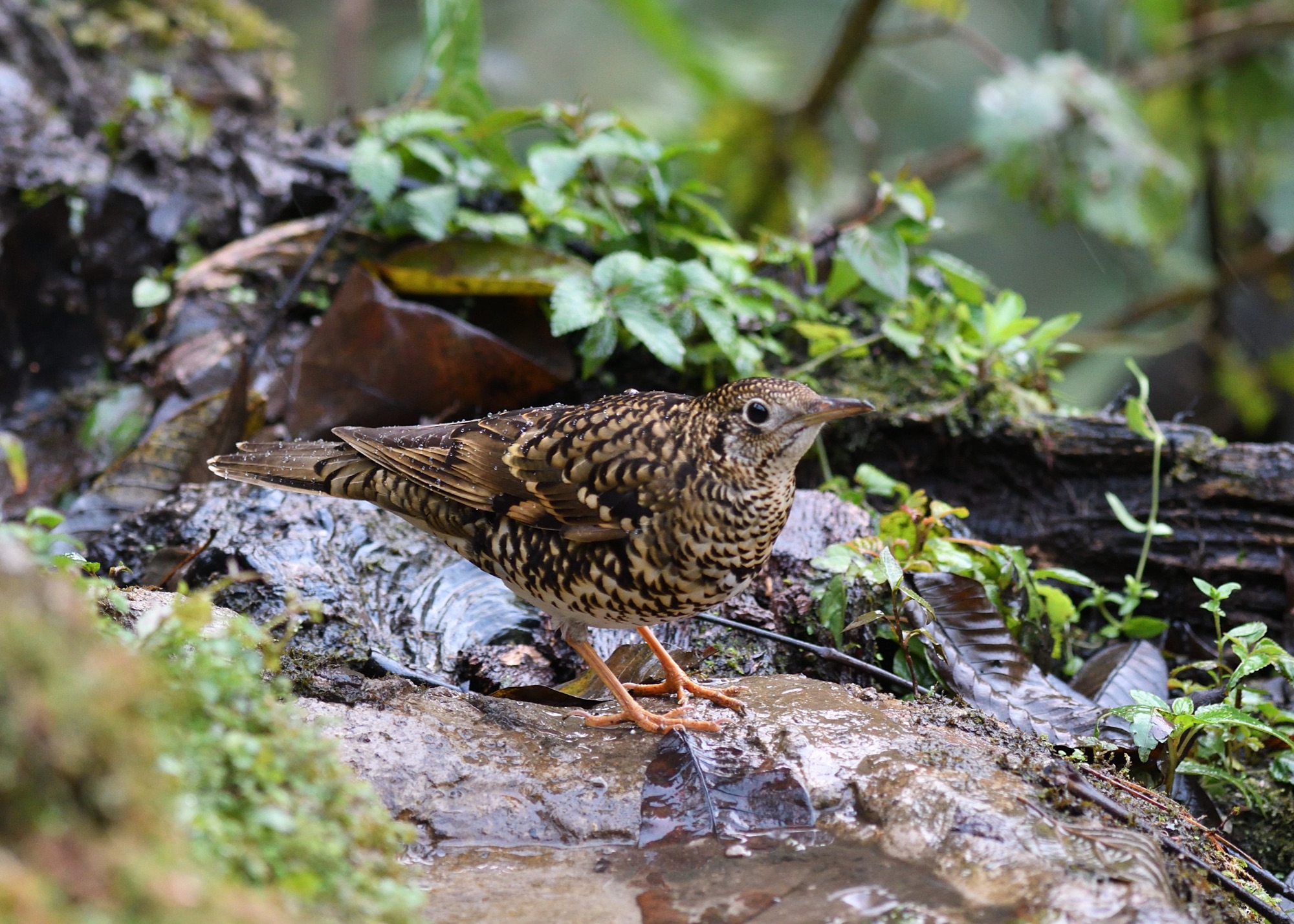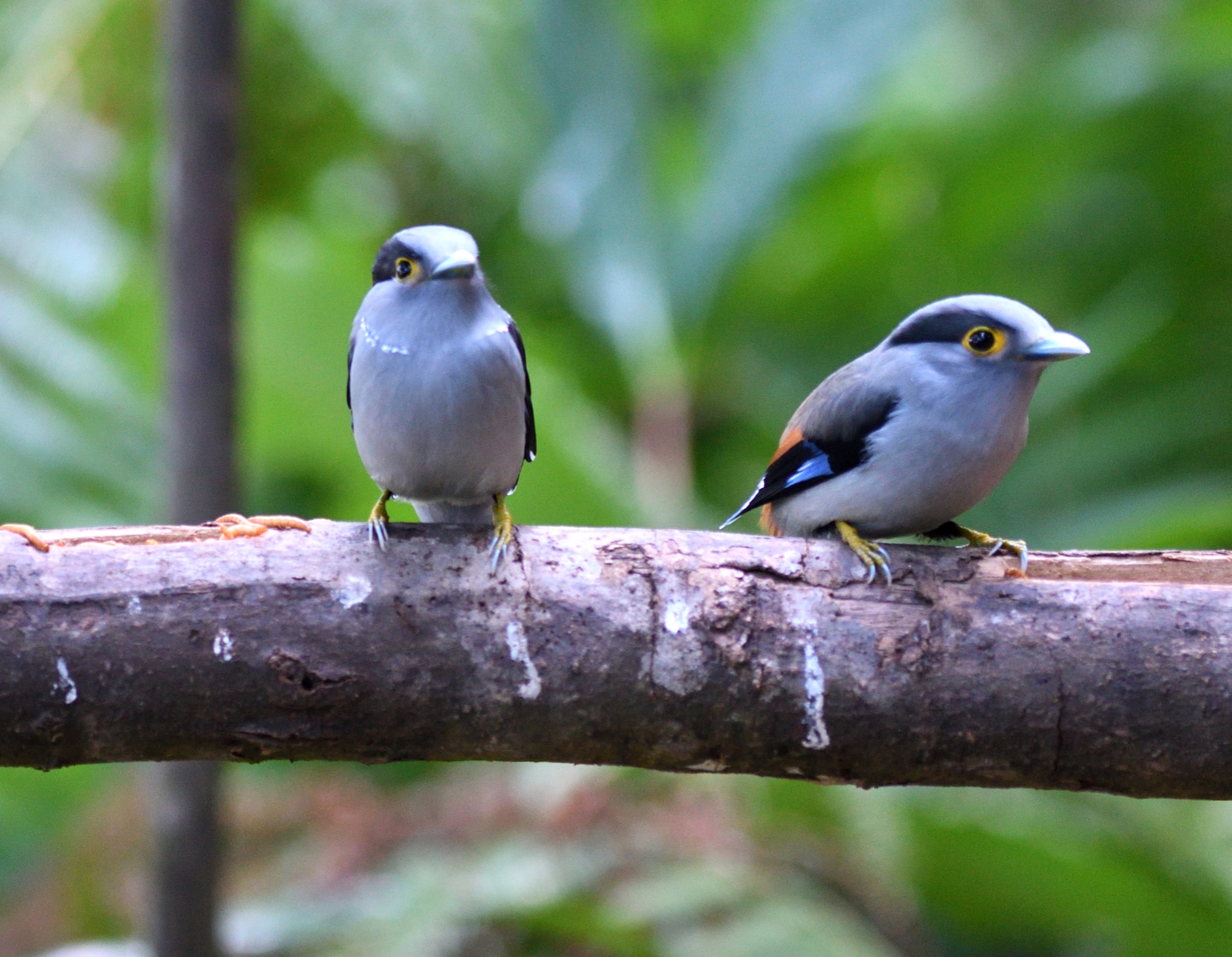CHINA - YUNNAN
Day 1 UK - Kunming - 10th Jan 2021
Arrival in Kunming (1,800m), south Yunnan after overnight flights via Beijing, Shanghai or Chengdu. Upon arrival we will drive across the hills to Chuxiong for an overnight stay.
Day 2 Zixi Shan Forest Park
We will spend the whole day in Zixi Shan Nature Reserve, where amidst the pine trees we will search for Giant and Yunnan Nuthatches. There's plenty to occupy us and the list of birds seen here is really quite impressive with other possibilities such as Mrs. Hume’s Pheasant (rare), Black-browed Bushtit, Vivid Niltava, Spot-breasted Scimitar- Babbler, Rusty-capped, Manipur, Yunnan and Spectacled Fulvettas, Maroon-backed Accentor, Black-headed Sibia, Black-breasted and Chinese Thrushes, Black-headed Greenfinch and Godlewski’s Bunting. Hopefully we will come across some large, mixed feeding flocks with species such as Grey-capped and Great Spotted Woodpeckers (the distinct stresemanni race), Chestnut-vented Nuthatch, Bar-tailed Treecreeper, Rosy and Long-tailed Minivets, White-tailed Robin, Orange-bellied Leafbird, Rufous-capped Babbler, Blue-winged and Bar-throated Minlas, Large Niltava, Chinese Blue, Blue-throated Blue, Ultramarine and Brown-breasted Flycatchers, Mountain and Brown-breasted Bulbuls, Green and Blyth’s Shrike-Babblers, Red-billed Leiothrix, Eurasian Jay, Eurasian Magpie, Black-throated Bushtit, Grey-crowned, Black-faced and Ashy-throated Warblers, Himalayan Forest Thrush, Rufous Sibia, Mrs. Gould`s Sunbird, Grey-headed Bullfinch and Black-faced Bunting.
Roadside birding along the way could give us Black-winged Kite, Eurasian Hoopoe, Coppersmith Barbet, Green and Blue-tailed Bee-eaters, Red-rumped Swallow, Asian House and Pale Martins, Grey-backed and Long-tailed Shrikes, Oriental Skylark, Siberian Stonechat, Striated Prinia, Russet Sparrow and Crested Bunting. Night in Chuxiong.
Day 3 Xi Zi Shan - Baihualing - Gaoligong Shan
We will spend the morning at Xi Shi Shan as this is a very good area with high bird activity and easy walks along the roads and forest trails. Our last tour found a Slaty Bunting, which is a very rare bird in Yunnan. But the mixed feeding flocks were very impressive and this proved to be a very enjoyable birding site. By late morning we will leave and set out on the drive to Baihualing and our comfortable hotel set just a few minutes drive from some of 20 - 30 photo blinds dotted across the hillside. Night in Baihualing.
Days 4 - 6 Gaoligong Shan
The Gaoligongshan mountain range is more or less an extension of the mighty Himalayas, a long chain of forested mountains that run from north to south along the Burmese border and harbour an array of mouth-watering specialities. There's a huge national nature reserve here around 600kms long and with altitudes ranging from 700m - 3916m, and we will have 2 full days to explore this excellent habitat that comprises subtropical evergreen and broadleaf forests, up to alpine meadows, snow-capped peaks and glaciers at over 6,000 metres. Our main purpose of coming here is the presence of numerous (approx 25) feeding stations with well positioned hides in the mid-altitude (1,800m) secondary forest. The hides are strategically placed within easy walking distance from the road and accommodate mostly Chinese photographers and birders. All hides provide logs or plastic chairs for seating. The birds are attracted by water (for bathing/drinking) and food, such as mealworms and fruit, which are regularly refreshed and birds visiting them are plentiful. There's a mouth-watering array of potential species visiting these feeding stations giving point-blank views and amazing photoraphic opportunities, of course there are no guarantees, but possibilities include Lady Amherst's Pheasant, Rufous-throated and Hill Partridge, Mountain Bamboo-Partridge, Chestnut-vented Nuthatch, Large Niltava, Rusty-fronted Barwing, Silver-eared Mesia, Blue-winged, Red-tailed and Bar-throated Minlas, Rusty-capped and Yunnan Fulvettas, Slender-billed, Black-streaked and Streak-breasted Scimitar-Babblers, Golden Babbler, White-browed Shortwing, Golden Bush-Robin, Himalayan Bluetail, Scarlet-faced Liocichla, Red-tailed, Assam, Scaly, Black-faced, Blue-winged and Moustached Laughingthrushes, Chestnut-bellied Rock-Thrush, Black-breasted and Long-tailed Thrushes, Black-headed, Crested Finchbill, Orange-bellied Leafbird, Long-tailed and Beautiful Sibias, Whiskered Yuhina, Spot-throated Babbler, Slaty-bellied, Grey-bellied and Chestnut-headed Tesias, Sichuan leaf-Warbler, Hill Prinia, Olive-backed Pipit, and others. If we are going to see Gould's Shortwing, then this is the spot, and what a huge result that would be! For anyone with a specific interest in bird photography then it will be possible to spend the bulk of your time at these feeding stations/hides or even if you aren't it is an unparallelled opportunity to see an vast array of amazing Asian birds up close and personal - far better than you would ever see them along the trails.
But there will also be an opportunity to walk the trails which were once part of the Southern Silk Road and explore a variety of different areas in search of Gaoligongshan's rarer inhabitants such as Yellow-rumped Honeyguide, Purple Cochoa, Cachar Wedge-billed Wren-Babbler, Grey-bellied Wren-Babbler, Spotted Elachura and Coral-billed Scimitar Babbler. Other possibilities in these forests include Silver Pheasant, Black Eagle, Mountain Hawk-Eagle, Crested Goshawk, Wedge-tailed and Pin-tailed Green-Pigeons, Speckled Wood-Pigeon, Collared Owlet, Greater Yellownape, Crimson-breasted, Darjeeling, Bay and Streak-breasted Woodpeckers, Great, Golden-throated and Blue-throated Barbets, Red-headed Trogon, Banded Bay Cuckoo, Long-tailed Broadbill, Maroon Oriole, Rusty-flanked Treecreeper, White-browed Bush-Robin, Himalayan Swiftlet, White-bellied Redstart, White-gorgeted Flycatcher, Slender-billed and Black-streaked Scimitar-Babblers, Black-throated Parrotbill, Black-headed and Blyth’s Shrike-Babblers, Spot-necked Babbler, Pygmy Wren-Babbler, Yellow-throated Fulvetta, Streaked Barwing, White-browed Shortwing, Flavescent and Mountain Bulbuls, Grey-headed, Brown and Spot-breasted Parrotbills, White-throated Laughingthrush, Broad-billed Warbler, Yellow-cheeked Tit, Chestnut-flanked White-eye, Olive-backed Pipit, Grey Treepie, Yellow-billed Blue Magpie, Streaked Spiderhunter, Spot-winged Grosbeak, Brown Bullfinch, Yellow-vented Flowerpecker, Black-throated Sunbird and Gold-naped Finch. Nights in Baihualing.
Day 7 Gaoligong Shan - Tengchong
We can spend the morning visiting some new hides for any species we might want to see or act on any new information of something mega visiting a hide such as the rare Ward's Trogon or Mrs Hume's Pheasant, or commoner birds that we might not yet have seen such as Golden-throated or Great Barbet, Red-headed Trogon, Grey-winged Blackbird, Grey-backed Thrush, or even Scarlet Finch. This will be a fine end to our time here and there is a very real danger we will be spoiled by the very close views of some great birds! After lunch we will drive a couple of hours to Tengchong where we will spend the night in a good hotel. Along the way we may well check out any suitable riverside habitat for Long-billed Plover, and could also see White-browed Laughingthrush, Tickell's Warbler, Black-collared Starling and Rosy Pipit. Night in Tengchong.
Day 8 Laifeng Shan - Nabang
The forested slopes of Laifengshan offers further opportunities to catch up with any species we havent seen yet. The main target here is Slender-billed Oriole and we should get good views of this uncommon bird. Other possible species here include Large Hawk-Cuckoo, White-browed Piculet, Bay, Rufous-bellied and Darjeeling Woodpeckers, Chestnut-vented Nuthatch, the endemic Brown-winged Parrotbill, Grey Bush-Chat, Black-naped Oriole, Black-headed, Rufous-backed and Beautiful Sibias, Long-tailed Minivet, Little Pied Flycatcher, Black-browed Bushtit, Bar-tailed Treecreeper, Burmese Shrike, White-tailed Robin, Fire-tailed Sunbird, Verditer Flycatcher, Greater Necklaced Laughingthrush, Red-faced Liocichla, Blue-winged Minla, Whiskered Yuhina, Silver-eared Mesia, Davison's Leaf-Warbler and others. A photo hide here offers a different range of species with Tibetan Serin the highlight, but there's also Red-billed Leiothrix, White-tailed Robin, Mountain Bulbul, Maroon-backed Accentor and plenty of other commoner species. Once we are finished here, we will drive some 4 hours to Nabang where we will spend the next 3 nights at a basic hotel. We will end the day near the Myanmar border at Nabang Town, but we’ll stop to search the Ruili Jiang River for River Tern and Small Pratincole along the way. Night in Nabang.
Days 9 - 10 Nabang
The bird-rich forests and valleys of Nabang hold an array of quality birds. We will be spending most of our time just a stones throw away from the Myanmar border during these next couple of days searching for Grey Peacock-Pheasant, Jerdon's Baza, Rufous-bellied Eagle, Oriental Hobby, Ibisbill, Grey-headed Lapwing, Thick-billed and Pin-tailed Green-Pigeons. Pale-headed Woodpecker, Blue-throated and Blue-eared Barbets, White-browed Piculet, Greater and Lesser Yellownapes, Long-tailed and Silver-breasted Broadbills, Blyth's and Black-eared Shrike-Babblers, Grey-eyed Bulbul, Grey-bellied Tesia, Golden and White-hooded Babblers, Greater and Pale-billed Parrotbills, Sichuan Bush-Warbler, Chinese Blue, Sapphire and Slaty-blue Flycatchers, Golden-fronted and Blue-winged Leafbirds, Red-billed and Coral-billed Scimitar Babblers, Streaked Wren-Babbler, Black-backed Forktail, Spot-winged Starling, Collared Myna and Spot-winged Grosbeak. Nights in Nabang.
Day 11 Nabang - Hongbenghe
We will continue to focus on lower elevation forests and a totally different range of birds from earlier in the tour such as Spot-bellied Eagle-Owl, Black-tailed Crake, Grey-headed Parakeet, Blue-bearded Bee-eater, Pale-headed Woodpecker, Collared Treepie, and both Red-billed and Coral-billed Scimitar Babblers. There is also a chance of Blue-naped Pitta here, but we'd need quite a bit of luck to connect with it. The forests here abound with birds and we’ll explore some forest trails that will give us access into the more lush forests which are home to Speckled and White-browed Piculets, White-bellied Woodpecker, Oriental Pied Hornbill, Green-billed Malkoha, Rosy Minivet, Pale Blue Flycatcher, White-hooded Babbler, Grey Sibia, Plain Flowerpecker, Slaty-backed Forktail, Rusty-capped Fulvetta, Grey-headed Parrotbill, Rufous-chinned Laughingthrush (rufiberbis), Sichuan Bush-Warbler, Yellow-bellied Warbler, Golden-crested and Collared Mynas and Vinous-breasted Starling. Once we are finished here, we will drive for 3 hours to a new site at Hongbenghe where we will spend the next 3 nights.
Days 12 - 13 Hongbenghe
Our main purpose of visiting this area is another set of photo blinds and feeding stations that hold a different suite of species to Baihualing. There is a very good chance of seeing Grey Peacock-Pheasant at one of these hides. Again, photographic opportunities are outstanding and we have a great chance of seeing some truly rare species that visit these hides. Highlights here include Kalij Pheasant, White-cheeked Partridge, Collared Falconet, sometimes Rusty-naped and Blue-naped Pittas, Great Slaty Woodpecker, and both Grey-sided and Spot-breasted Laughingthrushes. As with the hides at Baihualing, the views are outstanding and its an amazing experience to be able to study these birds and their behaviour at such close range. We will spend most of our time in these hides but can also walk the trails here in order to find some of these mentioned species that inhabit the surrounding area. Nights in Hongbenghe.
Day 14 Hongbenghe - Ruili
We plan to visit another hide this morning before heading to our next base at Ruili, where we will spend the next 2 nights.
Day 15 Ruili - Moli Forest Park - Moli Reservoir
We can visit Nanjingli Forest and other nearby sites which are bordered on three sides by Myanmar. These forested ridges are cloaked in good quality forest and home to Jerdon’s Baza, Pin-tailed Green-Pigeon, Brown Wood-Owl, Hodgson’s Frogmouth, Rufous and Stripe-breasted Woodpeckers, Long-tailed Broadbill, Burmese Shrike, Slender-billed Oriole, Asian Drongo-Cuckoo, Burmese Shrike, Cook's Swift, Brown-breasted Flycatcher, Black-winged Cuckooshrike, Black-throated, White-crested and Rufous-necked Laughingthrushes, Spotted, Little, Black-backed, Slaty-backed and White-crowned Forktails, Grey Sibia, Scarlet-faced Liocichla, White-browed Laughingthrush, Streaked Wren-Babbler, Spotted Elachura, Spot-necked and Spot-throated Babblers, Slaty-bellied Tesia, Pale-footed Bush-Warbler, Davison's Leaf-Warbler, Dark-sided Thrush, Pale-billed (Lesser Rufous-headed) and Greater Rufous-headed Parrotbills and Collared Myna. Night in Ruili.
Day 16 Moli Valley - Kunming
This morning we have further chances to catch up with any species still missing from our lists and hopefully we can end our fantastic Yunnan adventure on a high with hopefully something unusual. Maybe an Eyebrowed Wren-Babbler can be coaxed out of the undergrowth or we can just enjoy further views of some of the superb birds in these dense forests. In the afternoon we will fly back to Kunming where we will stay in a nearby hotel and enjoy a farewell dinner before retiring for the night. Night in Kunming.
Day 17 Kunming - UK - End of Tour - 26th Jan 2021
International flights back to the UK/USA and end of the tour.
All photos copyright Zoothera Birding unless otherwise stated.
1st row: Assam Laughingthrush, Grey Peacock-Pheasant, Red-tailed Laughingthrush
2nd row: Chestnut-headed Tesia, Himalayan Thrush, Golden Bush Robin
3rd row: Blue-naped Pitta, Mrs Hume's Pheasant, Pale-billed Parrotbill
4th Row: Coral-billed Scimitar-Babbler, Scaly Thrush, Silver-breasted Broadbill
